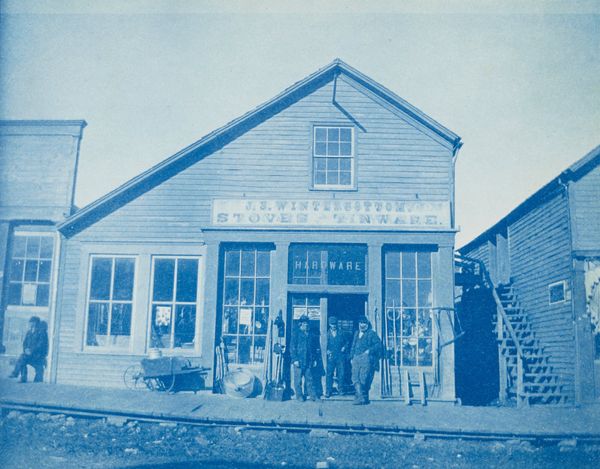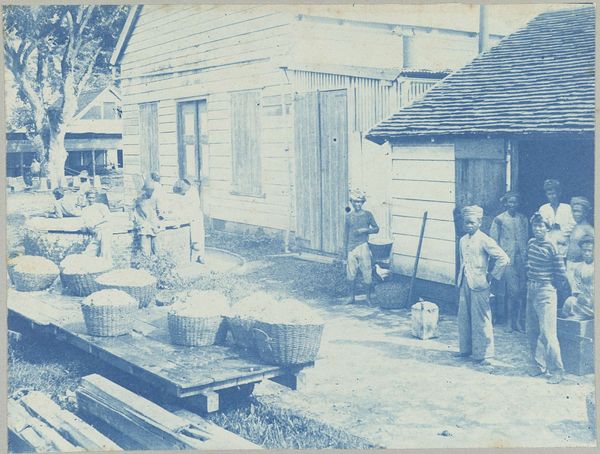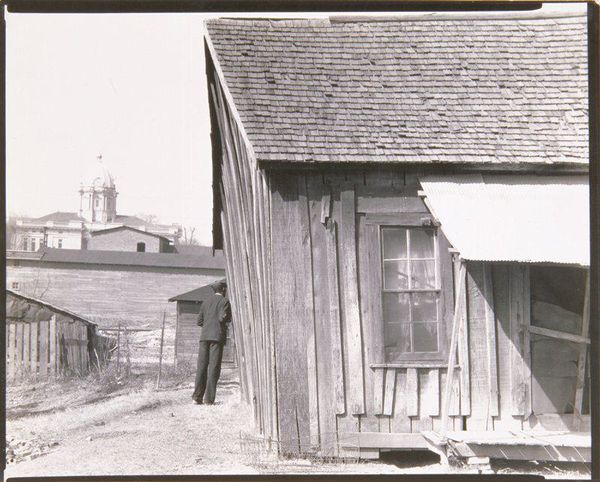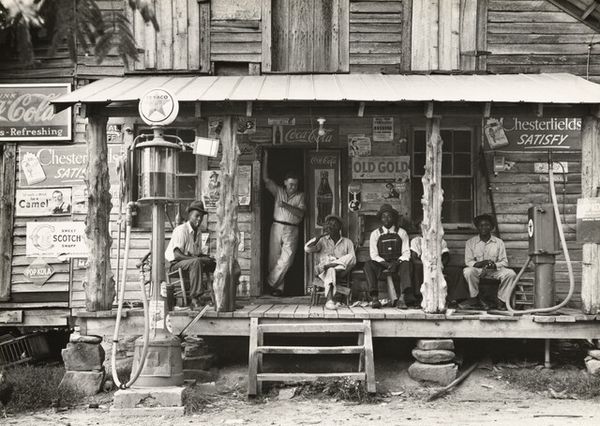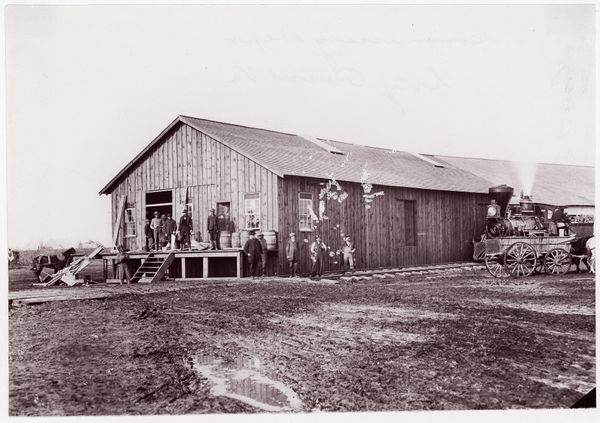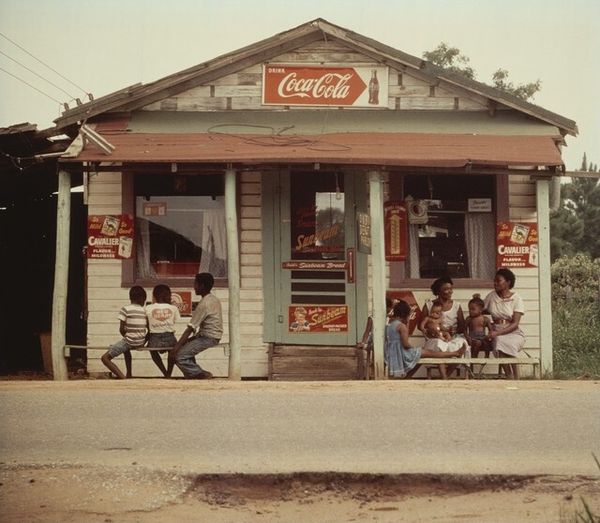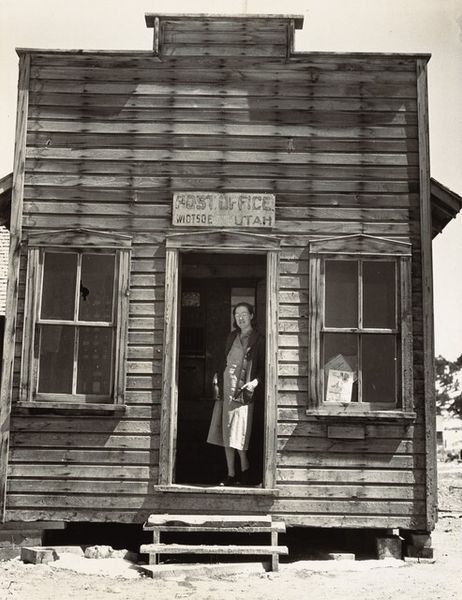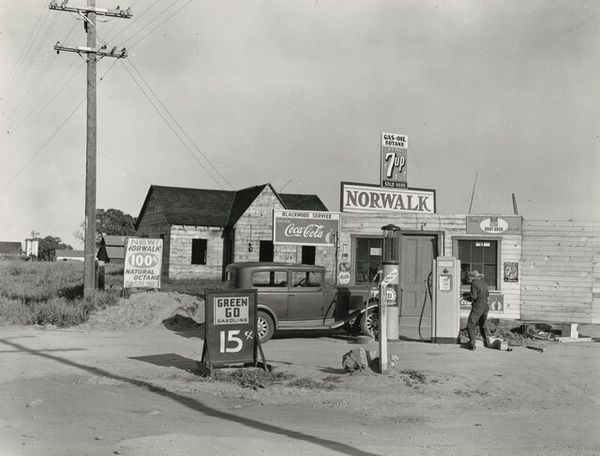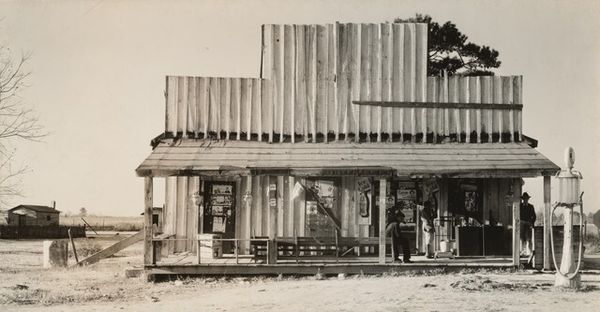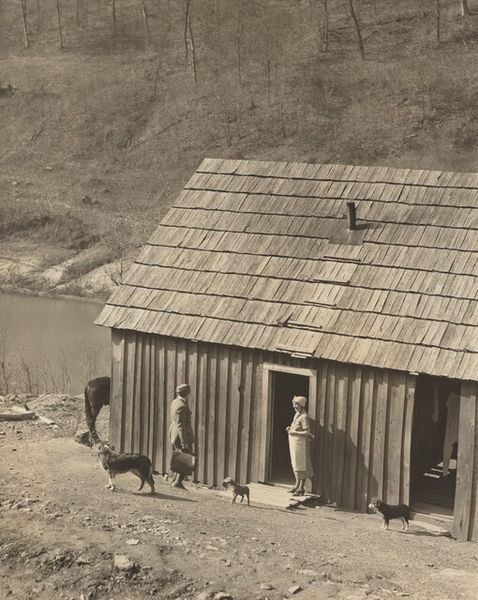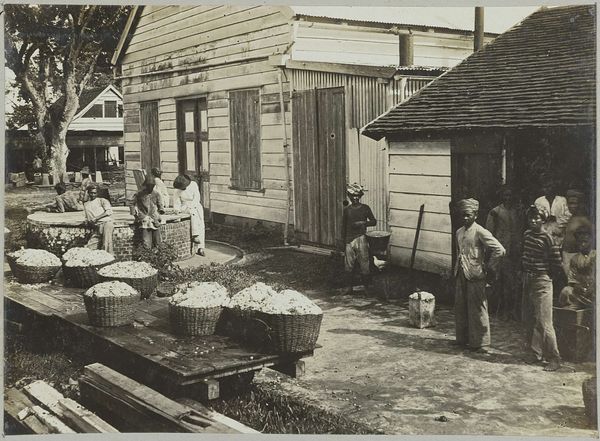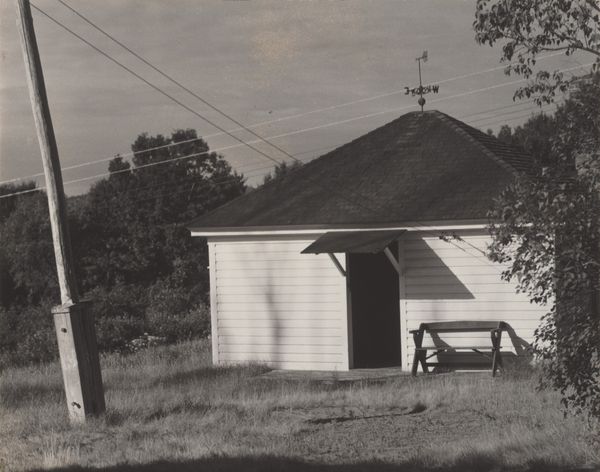
Living Quarters and Juke Joint for Migratory Workers, a Slack Season, Belle Glade, Florida Possibly 1941 - 1985
0:00
0:00
photography
#
portrait
#
african-art
#
landscape
#
social-realism
#
photography
#
genre-painting
#
realism
Dimensions: image: 16.5 × 25 cm (6 1/2 × 9 13/16 in.) sheet: 24.13 × 33.02 cm (9 1/2 × 13 in.)
Copyright: National Gallery of Art: CC0 1.0
Curator: The worn texture and composition create a world-weary feel, a stark contrast to the leisurely activity on display. Editor: This is "Living Quarters and Juke Joint for Migratory Workers, a Slack Season, Belle Glade, Florida," possibly taken between 1941 and 1985 by Marion Post Wolcott. It’s a very revealing photograph. Curator: Revealing, yes, but visually, what strikes me is how Wolcott uses lines—horizontal planks, the receding rooflines, the gangplank of a sidewalk leading into the picture's world—to build this stage-set feel of the scene. Everything feels ordered by, and subject to, a receding perspective, which is visually unsettling and creates emotional distance. Editor: The signs for "Ice Cold Jax" and "Ale Beer Stout" aren't merely commercial—they're crucial signifiers. They are symbols of both respite and possibly exploitation during this slack season. The figures are gathered there because there is nothing else available to them. It becomes an important image reflecting the limited opportunities and cultural gathering spots within this migratory community. Curator: The color adds so much too. The subdued palette emphasizes the worn state of the buildings and infrastructure. These pastel hues add to that feeling of melancholy, while simultaneously documenting social spaces during periods of economic rest. Editor: Exactly. Wolcott understood that the juke joint, as seen here, operated as the nerve center of African-American cultural life under oppressive socio-economic conditions. Consider the symbolism—a meeting place but also an indicator of systemic inequality. Curator: It's that tension—between place and oppression—that I think makes the image so unforgettable. Editor: I agree. By looking deeper, we are not only viewing an artistic composition, but understanding something very significant about lived realities and historical continuity through this photographic documentation.
Comments
No comments
Be the first to comment and join the conversation on the ultimate creative platform.
